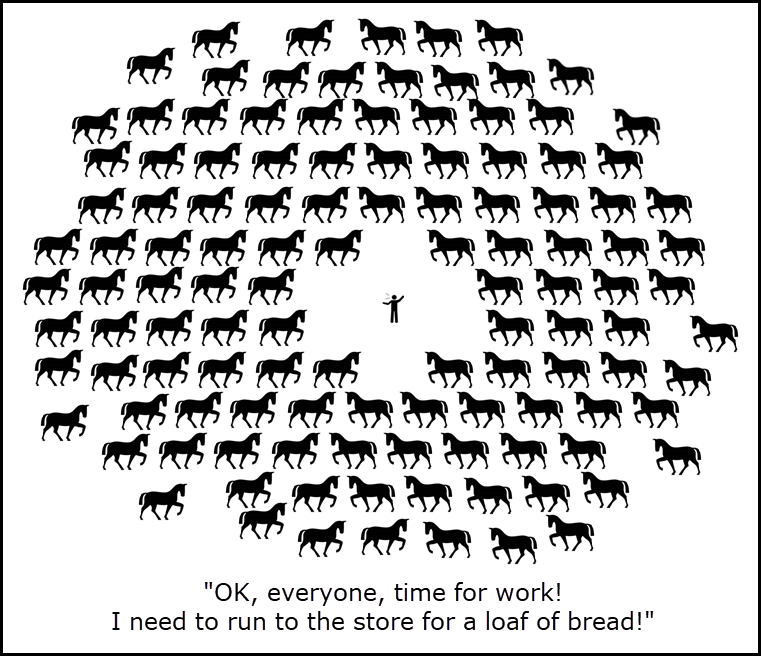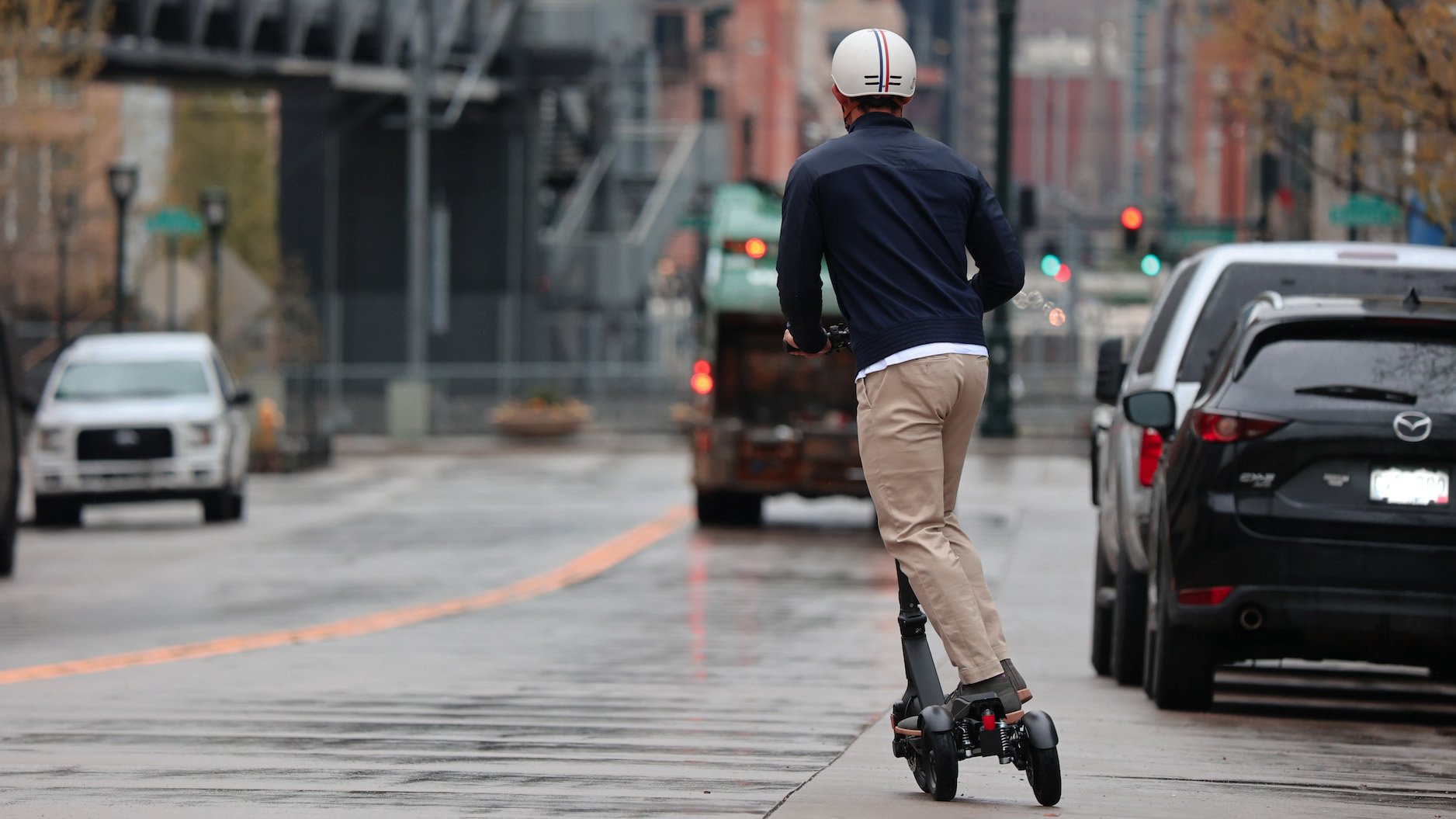It's Time to Redefine the Single Occupancy Vehicle
It’s that time again, when pumpkin spice fills the air and Black Friday sales lure bargain hunters and urban design nerds to regional shopping centers—the former hoping to save a few bucks on consumer goods, the latter hoping to save their cities from the madness of minimum parking standards.
If you’ve never participated in the annual holiday tradition of counting empty parking spaces on the busiest shopping day of the year, I strongly encourage it. There’s nothing like seeing firsthand the mind-boggling waste that has been perpetuated by the parking requirements table in your local zoning code.
You should see it when it’s NOT busy! Photo by Sarah Kobos
But you don’t have to race to the mall to see the inefficiencies baked into our transportation system. It’s all around us, every hour of every day. Our cities are held hostage by land use regulations that determine our transportation “choices”, while our streets are designed in ways that make it unsafe to travel without a car.
Another Way to Think About Human-Scaled Design
Some months ago, I stumbled upon a graphic that has been on my mind ever since. It was a civil engineer’s view of a human being, related to “Pedestrian Level of Service.” The graphic basically captured the amount of space that an average person takes up on a sidewalk. At the time, I thought it was a hilarious insight into the way engineers think. I mean, really, how can you reduce the pedestrian experience to a geometric calculation?
What an engineer thinks about, when they think about people. (Source: fhwa.dot.gov)
And yet, that image has stuck with me, because I keep thinking about the efficiency of the human body. Each model year comes equipped with space-saving design, lots of leg-room, built-in entertainment features, and is bio-fuel-compatible with generally limited emissions. On foot, we are nimble, responsive, and shaped to maximize the utilization of space. A crowd of people is not a traffic jam, it’s a party!
But what happens when you exchange your body’s natural efficiency for an SUV? Suddenly the perfect economy of the human form is replaced by the least efficient mode of transportation imaginable.
Think about it. Why do we require the power of hundreds of horses just to move our bodies from one place to another? (Trust me, if you actually had to feed, groom, and muck out stalls for all that horsepower, you would quickly acquire a taste for cycling.)
This is what I think about every time drivers pass me on my bike. (Source: Sarah Kobos)
Next consider all the space that an automobile, SUV or truck requires, compared to the average adult human body. No wonder our streets are congested!
The “pedestrian ellipse” (2.6 square feet) compared to the footprint of an SUV (115 square feet), and the land dedicated to a single parking space with associated drive aisle (270 square feet). Graphic by Sarah Kobos.
You couldn’t dream up a less efficient way to move around town if you tried. The average car is parked 95% of the time, and during the other 5% of the time when it’s actually in use, it typically functions at just 25% capacity (one person driving a four-person vehicle). Put it all together, and relying on cars for personal transportation means operating a transportation system that functions at 1% capacity. Meanwhile, our public streets are dedicated entirely to auto conveyance, while a majority of private commercial land is reserved for parking.
Plus, those roads don’t maintain themselves. Wear and tear on city streets is directly related to the weight of vehicles that use it. The average American adult weighs 182 pounds. The average SUV weighs 5,000 pounds. Road damage increases exponentially with weight, so we all have an interest in utilizing the lightest vehicles appropriate for the job, because we’re all paying for the repairs.
A GMC Yukon has a towing capacity of 8,000 pounds. Most of us don’t need that much. Photo by Sarah Kobos
Which has me wondering: maybe it’s time to start questioning our assumptions about “single-occupancy” vehicles.
Consider Human-Scaled Transportation Options
A street designed for people-oriented transportation. Photo by Sarah Kobos
Last summer, my partner and I spent a few weeks in Toronto, Ottawa, and Montreal. Each of these cities offered fast and efficient public transit systems and plenty of human-scaled, walkable neighborhoods. But equally impressive were the ways these cities were thoughtfully rebuilding streets to give people the freedom to define the meaning of personal transportation, instead of merely accepting the driving default.
Every day, we saw people comfortably traveling on foot as well as on bicycles, tricycles, e-bikes, scooters, e-scooters, motorized scooters, skateboards, longboards, and rollerblades. They were using vehicles appropriately scaled to the size of their bodies and the demands of the trip. And they were able to do this because of meaningful public investment in a connected network of protected bike lanes, sidewalks, and off-street trails. Even in areas lacking dedicated infrastructure, traffic was typically slowed to the point that the streets became feasible places for all users.
And by opening up the streets to all, they actually reduced congestion. Because every time you replace an SUV with a footprint of 115 square feet with a bike that requires 12 square feet of road space, or an e-scooter that takes up about 4 square feet, you’re doing everyone a favor.
The evening rush-hour commute. Photo by Sarah Kobos
Obviously, not every street was a pedestrian paradise. But the proof of their success was evident in the sheer volume and demographics of the people enjoying active transportation: any time you see a multitude of women, kids, and older folks travelling freely without the protective carapace of a car, you know you’ve created a safe and successful transportation system.
So what can we do? Get involved and advocate for land use policies that support walkability. The elimination of minimum parking requirements is a great place to start. Next, fight for city streets that are designed for all users, not just the world’s least efficient mode of transportation. And finally, start thinking about “right-sizing” your own personal transportation choices according to your needs.
Get in the habit of asking, “What’s the most efficient way to get to the places I need to go today?” But don’t just prioritize speed or convenience. Consider the distance, the shared cost of “free” parking, the actual need for cargo capacity, the weather, the environmental impact of the trip, and the public cost of infrastructure needed to support your choice.
Streets that are safe for kids are safe for everyone. Photo by Sarah Kobos
A trip to a nearby store to buy a handful of items? Ride your bike. A large purchase? OK, drive your car. Daily work commute? Can you occasionally travel by bike, bus, skateboard, or simply share the drive with a buddy? Need to get from one side of downtown to the other on a busy Friday night? Hop on an e-scooter. Instead of merely accepting the driving default, take the time to think about other possibilities and use them.
Each time you leave your car at home, you make the city a better place for everyone, while reducing traffic, increasing fitness, and lowering your transportation costs.
So why not consider a new definition of “single-occupancy vehicle”—or better yet, give it a try?
Appropriately scaled single-occupancy vehicles. Photo by Sarah Kobos.











Maddy Novich is a criminal justice professor at Manhattan College, a mom of three, and an Instagram influencer living in New York City—you might know her as @cargobikemomma!